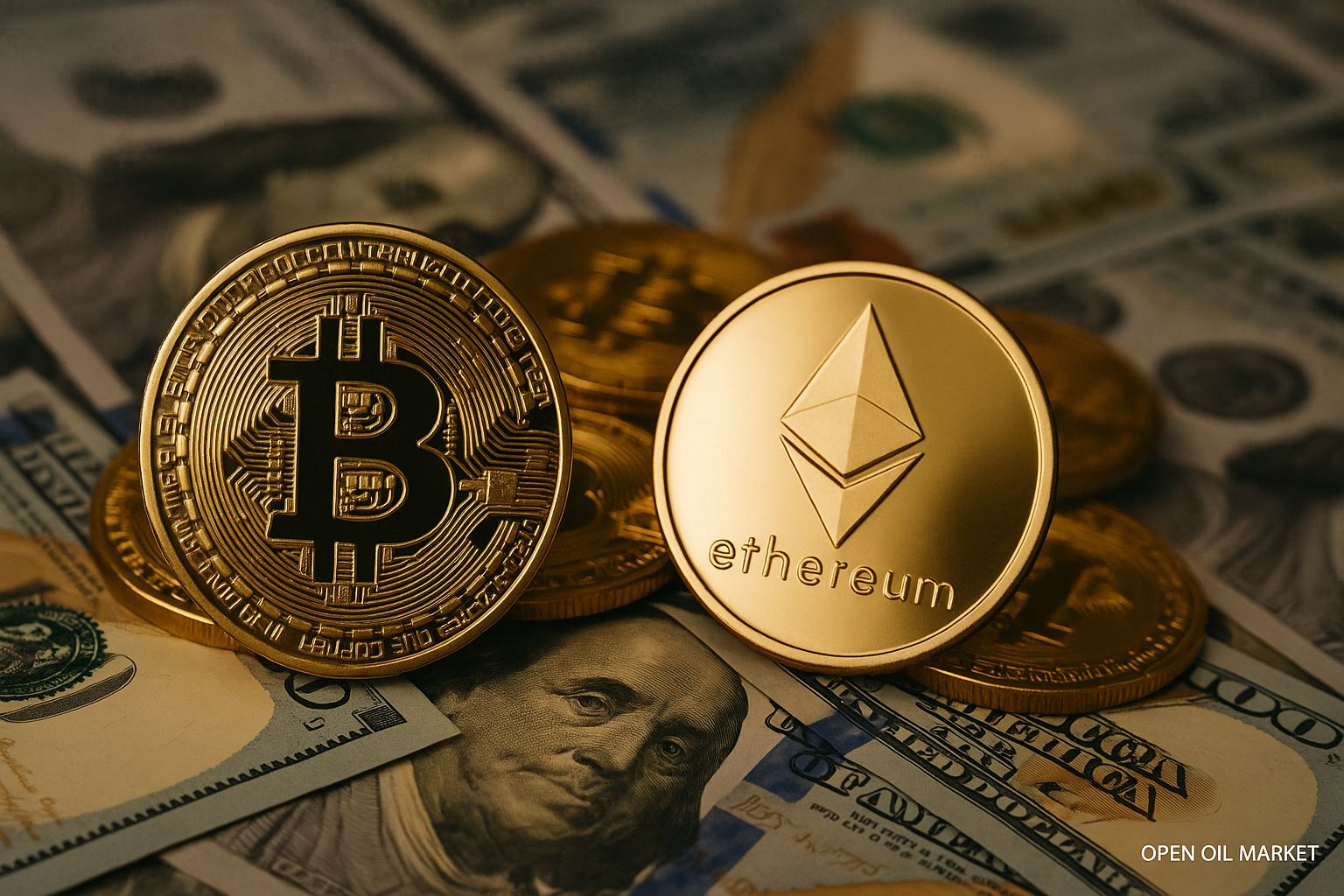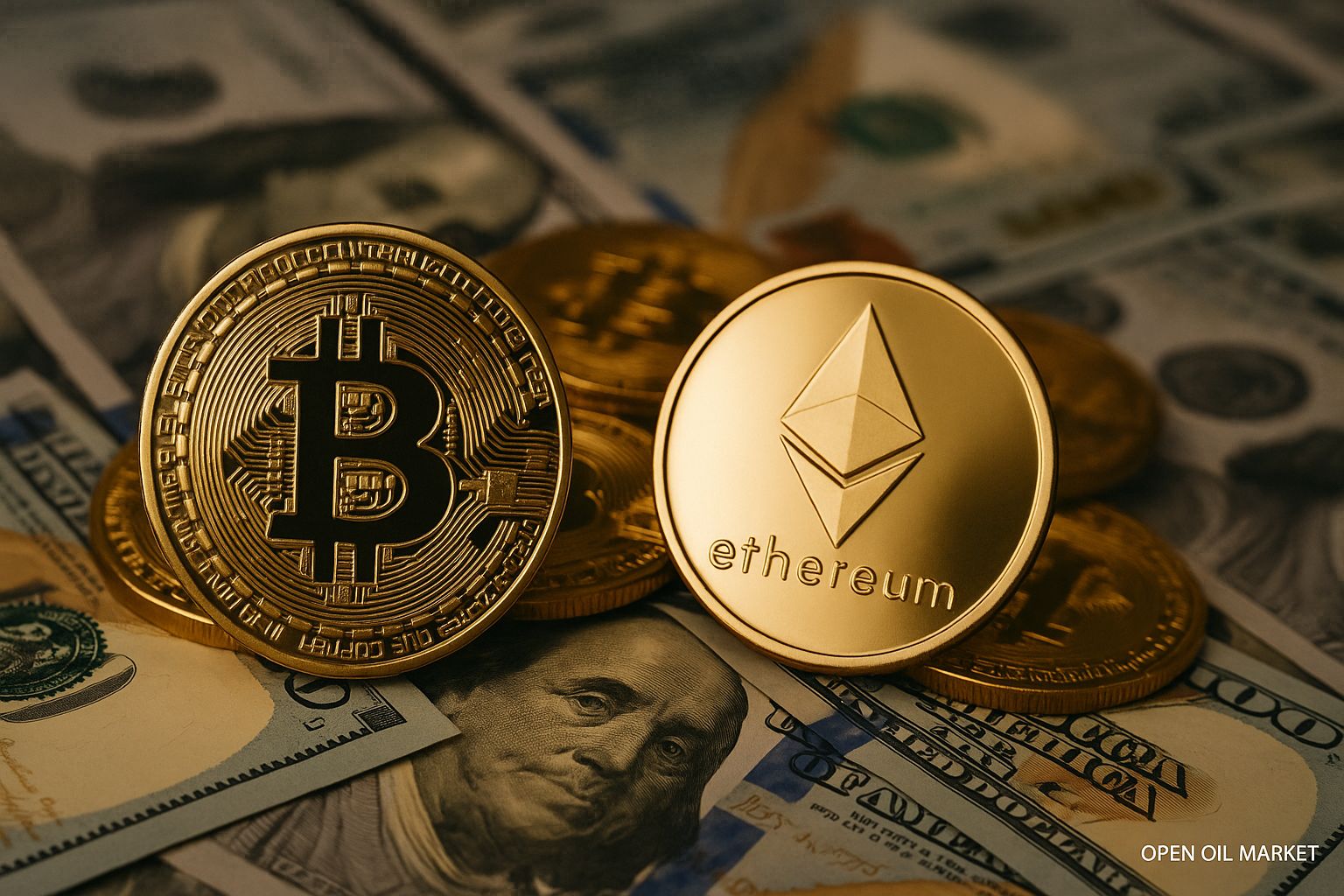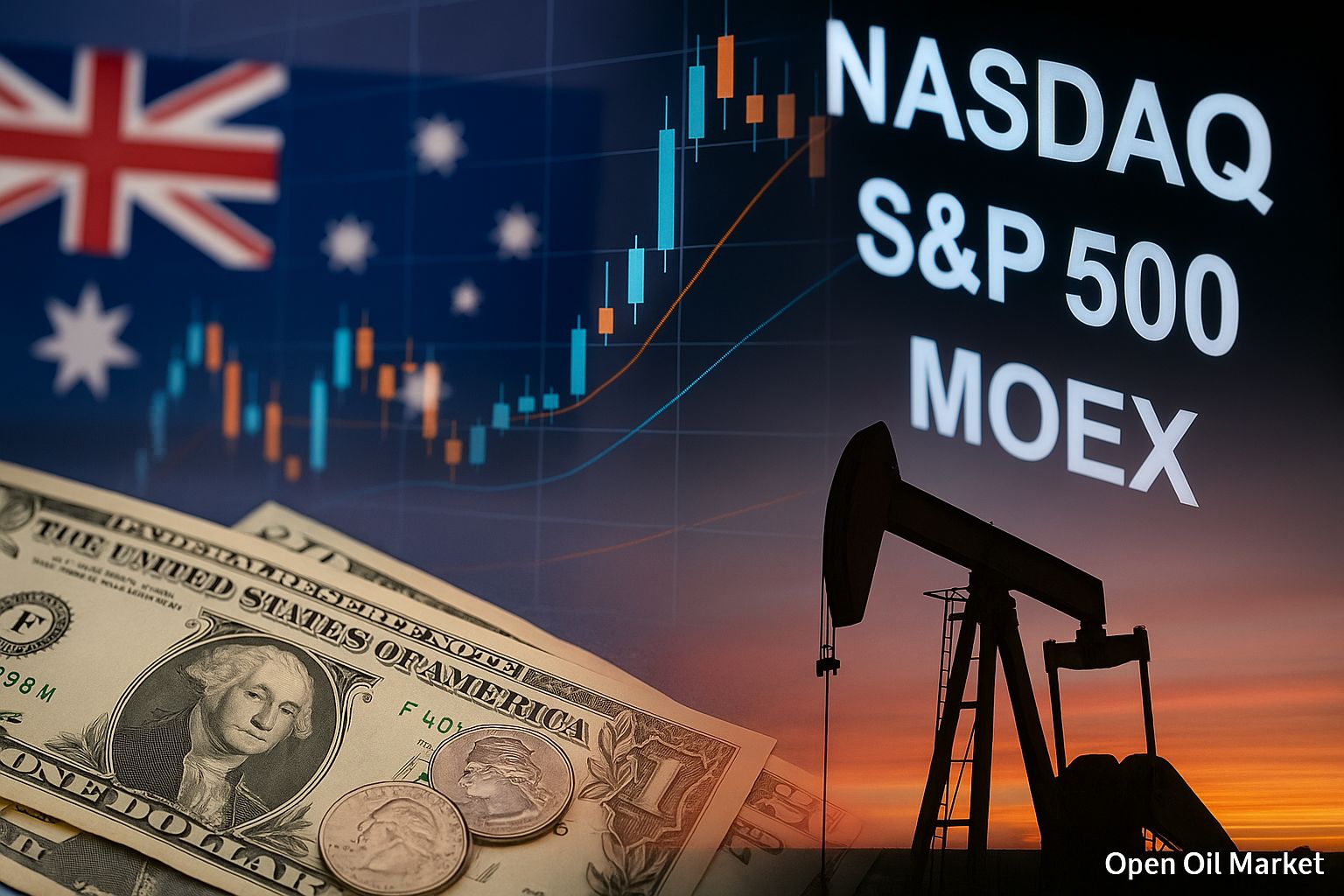
Current Cryptocurrency News as of August 26, 2025: Ethereum Reaches Historical High, Bitcoin Consolidates, Institutional Investments Strengthen the Market. An Analysis of DeFi, NFT, and Crypto-ETF Trends.
The cryptocurrency market continues to actively grow as August comes to a close. Investors are showing an increased appetite for risk amidst favorable macroeconomic signals and an influx of institutional capital. Ethereum recently reached a historical high, while Bitcoin remains consolidated near its recent highs after hitting a record. At the same time, several leading altcoins are experiencing solid growth, the decentralized finance (DeFi) and NFT segments are reviving, and regulators are gradually providing more clarity in the rules of the game.
Bitcoin: Consolidation After Record Highs
In mid-August, Bitcoin (BTC) reached a new historical high, surpassing $124,000. In recent days, the flagship cryptocurrency has pulled back slightly and is now consolidating around $115,000, still significantly above the levels seen at the beginning of the year. Since January, Bitcoin has more than doubled in price, solidifying its status as "digital gold" amidst rising interest from both retail and institutional investors. Analysts view the current pause after the impressive rally as a healthy correction, allowing the market to cool off before entering a new growth phase. The limited supply (21 million coins) continues to be a long-term price support factor. Major players are continuing to accumulate BTC; for instance, the BlackRock fund, via its ETF, now holds approximately 3% of the total Bitcoin supply, reflecting the scale of institutional demand.
Ethereum: A New Historical High
Ethereum (ETH), the second-largest cryptocurrency by market capitalization, recently increased in price to ~$4,950, surpassing its previous peak in 2021. In August alone, Ether gained about 25%, driven by favorable external conditions and large capital inflows. The easing rhetoric from the Federal Reserve has heightened investors' interest in risk assets, prompting a flow of funds from BTC to ETH. Additionally, the launch of the first spot ETFs on Ethereum has led to significant inflows, sometimes even outpacing those of Bitcoin funds. The rising institutional demand for ETH, combined with overall market optimism, has enabled Ethereum to strengthen its market share. The breach of the psychological threshold of $5,000 has attracted a wave of new buyers; however, such rapid growth may lead to increased volatility in the near term.
Altcoins: Rally Beyond the Top 2
Many large altcoins are also showing impressive results. Ripple (XRP) has surpassed $3 for the first time since 2018 following Ripple’s court victory against the SEC, which removed regulatory risks from this token. Binance Coin (BNB) has risen to ~$900, reaching a new high amidst the expansion of the Binance ecosystem and high activity on the Binance Smart Chain. Solana (SOL) has approached $200, restoring investor confidence in its high-speed blockchain. Other platform projects, such as Cardano (ADA), firmly maintain their positions in the top 10 thanks to technical upgrades and growth in the number of decentralized applications. Even meme tokens like Dogecoin (DOGE) have seen a renewed influx of interest and price growth as retail traders return to the market. Overall, the altcoin segment is experiencing a surge, although capital is mainly flowing into projects with real utility and established reputations.
Institutional Investments and ETFs
The current market growth is bolstered by unprecedented activity from institutional investors. Major financial companies are launching products related to crypto assets: exchange-traded funds (ETFs) for Bitcoin and Ethereum have emerged, opening access to the market for a wide array of investors. Of particular note is the success of BlackRock's spot Bitcoin ETF, which has accumulated about 3% of the total BTC supply in less than two years, making the fund one of the largest Bitcoin holders worldwide. Such immense appetite from Wall Street suggests that for many, the question is no longer whether to invest in cryptocurrencies, but rather how much of their portfolio to allocate to them. Funds focused on Ethereum are also attracting large investments—at certain points, inflows into Ethereum ETFs have even outpaced their Bitcoin counterparts, reflecting interest in a broader spectrum of digital assets. The massive participation of institutional money enhances market liquidity and adds maturity, gradually lowering volatility. Overall, in 2025, institutional investments have become one of the key drivers of the crypto rally.
DeFi: A New Breath for Decentralized Finance
The decentralized finance sector is experiencing a revival amidst the market’s growth. The total value locked (TVL) in all DeFi protocols exceeds $160 billion—its highest level since spring 2021. Approximately two-thirds of this amount is locked in the Ethereum blockchain; the rest is distributed across other networks (e.g., Solana). Leading platforms—staking services and lending—have solidified their positions, once again accumulating billions of dollars and restoring user trust. The industry is gaining momentum through the trend of tokenizing real assets—issuing tokens on the blockchain backed by traditional values (debt, real estate, etc.)—which is attracting new major players into DeFi. Technical improvements have also played a role—transaction fees on the Ethereum network have decreased compared to peak levels in previous years, partly due to the launch of Layer 2 solutions, making access to decentralized applications easier for a wider audience. Of course, risks of smart contract hacks persist; however, current metrics clearly indicate that DeFi has once again become an integral part of the crypto economy, offering investors alternative ways of generating returns (staking, liquidity farming, etc.) outside of traditional banking services.
NFT: The Market for Digital Collectible Tokens
The NFT segment has noticeably cooled compared to the peak frenzy of 2021, yet it continues to function and evolve. In 2025, sales of non-fungible tokens have already surpassed $3.5 billion—significantly lower than the records of previous years, but indicative of the fact that interest in digital collectible assets has not disappeared. Investors have become much more discerning: rather than indiscriminately purchasing low-value images, attention is now focused on rare and in-demand assets. Elite collections (CryptoPunks, Bored Ape Yacht Club, etc.) remain highly valued—individual pieces are sold for millions of dollars. However, average prices and trading volumes are far from peak levels: the current monthly turnover of NFTs (~$600-700 million) is noticeably lower than during the 2021 boom (> $2 billion per month). At the same time, the market is exploring new application niches: tokens are increasingly being used as in-game items, tickets, or components of loyalty programs. This evolution may spark a new wave of interest in NFTs in a more utilitarian format.
Regulation and Acceptance
In 2025, significant progress in cryptocurrency regulation is observed worldwide, reducing uncertainty for market participants. In the US, the Securities and Exchange Commission (SEC) has launched the Project Crypto initiative to modernize regulations—plans are in place to clearly define the status of tokens, disclosure requirements, and asset custody rules. Concurrently, a package of laws regarding stablecoins and cryptocurrency exchanges is being discussed in Congress, signaling a more lenient approach from authorities. In Europe, the MiCA (Markets in Crypto-Assets) regulation came into effect at the end of 2024, establishing uniform rules for the crypto asset industry across all EU countries. Major exchanges are already starting to receive licenses under the new standards, enhancing transparency and trust in the market.
In other regions, authorities are also softening their approach: Hong Kong is licensing cryptocurrency exchanges for retail investors, while Dubai is attracting blockchain companies with progressive regulations. At the same time, financial corporations are accelerating the adoption of crypto instruments—from the launch of the PYUSD stablecoin by PayPal to testing crypto payments on Visa networks and new banking services for token storage. These trends demonstrate the integration of cryptocurrencies into the traditional financial system, reducing regulatory risks for investors and opening new opportunities.
Top 10 Most Popular Cryptocurrencies
Below are the ten most significant cryptocurrencies as of today—along with their market roles and current status:
- Bitcoin (BTC) – the first and largest cryptocurrency ("digital gold") with a capitalization of approximately $2 trillion. Its limited supply (21 million coins) combined with high demand makes BTC a scarce asset. In 2025, Bitcoin reached a price record and remains the main barometer of the industry.
- Ethereum (ETH) – the second-largest crypto asset and leading smart contract platform (the foundation for most DeFi and NFT applications). In August 2025, Ethereum reached a new historical high (~$4,900), solidifying its status as a key altcoin in the market.
- Tether (USDT) – the largest stablecoin pegged to the US dollar (1 USDT ≈ $1). Widely used by traders for trading and in DeFi; the issuance volume of USDT exceeds $80 billion, providing high liquidity in the market.
- Binance Coin (BNB) – the native token of the Binance ecosystem (exchange and BSC blockchain). Used for fee payments and operation of decentralized applications; due to the growth of the BNB ecosystem, it has become one of the most valuable crypto assets (reaching ~$900 in 2025).
- Ripple (XRP) – the token of the Ripple payment network for fast cross-border transfers. After Ripple's court victory in the US, interest in XRP increased: the price returned to ~$3, moving the token back into the top 5 by market capitalization.
- USD Coin (USDC) – the second-largest stablecoin backed by dollar reserves (issuer – the Centre consortium with participation from Coinbase). Known for its transparency in reserves and compliance with regulations; widely used in trading and DeFi.
- Cardano (ADA) – a smart contract platform with a focus on scientific methods of development. Regular technical upgrades and growth of decentralized applications help ADA remain in the top 10 cryptocurrencies.
- Solana (SOL) – a high-speed blockchain with minimal fees. The SOL token attracts many DeFi and NFT projects; after a downturn in 2022, SOL's price has recovered and approached its historical high.
- Dogecoin (DOGE) – the most well-known meme coin with unlimited supply, popular due to its active community; during market surges, its price soars, and the current market rise has again lifted DOGE into the top 10.
- Tron (TRX) – a smart contract platform recognized for its application in the entertainment industry and stablecoin issuance (a significant portion of USDT circulates in its network); TRX consistently remains in the top 10, reflecting the growth of the Tron ecosystem.




